AN EXTRAORDINARY MEMOIR OF SURVIVAL
SIM KESSEL
First Cooper Square Press Edition 2001
This Cooper Square Press paperback edition of Hanged at Auschwitz (originally published in France as Pendu Auschwitz in 1970) is an unabridged republication of the edition first published in New York City in 1972, with the addition of a new introduction by Walter Laqueur.
Translation copyright 1972 by Stein and Day, Incorporated
Copyright by Solar, 1970, as Pendu Auschwitz
New introduction copyright 2001 Walter Laqueur
Designed by Bernard Schleifer
All rights reserved.
No part of this book may be reproduced in any form or by any electronic or mechanical means, including information storage and retrieval systems, without written permission.
Published by Cooper Square Press
An Imprint of the Rowman & Littlefield Publishing Group
150 Fifth Avenue, Suite 817
New York, New York 10011
Distributed by National Book Network
Library of Congress Cataloging-in-Publication Data Available
ISBN 0-8108-1162-6 (pbk : alk. paper)
 The paper used in this publication meets the minimum requirements of American National Standard for Information SciencesPermanence of Paper for Printed Library Materials, ANSI/NISO Z39.48-1992. Manufactured in the United States of America.
The paper used in this publication meets the minimum requirements of American National Standard for Information SciencesPermanence of Paper for Printed Library Materials, ANSI/NISO Z39.48-1992. Manufactured in the United States of America.
INTRODUCTION TO THE COOPER
SQUARE PRESS EDITION
THE TITLE IS startlingSim Kessel was hanged in Auschwitz, but he was not hanged to death. Deported from France to this most infamous of all camps, he had tried to escape, but was caught and sentenced to death by hanging. But the rope broke.
Throughout his captivity he owed his survival to a number of incredible accidents (like the one mentioned above). The same is true with regard to almost everyone who lived to tell his story: some survived because they were small of stature and were overlooked during selections, others because they were on good terms with the block leaders, the kapos, or because they could count on the solidarity of the group to which they belonged. In the case of Kessel it was the support of the boxing fraternity that saved him on two critical occasions: once it was an S.S. man with a broken nose and cauliflower ears who spared his life; on the other occasion it was a kapo who had been sent to kill him after the execution by hanging failed.
Boxing was serious business in the country of Georges Carpentier and Marcel Cerdan, and while Kessel was not champion of the world, or even of Europe, he seemed to have been better than the average amateur. He competed in some of the leading boxing rings in France, including once in the Velodrome dHiver, which ironically would play a tragic role in the history of the deportations of French Jews.
We learn little about Kessels prior life from his memoir, except that he was a native of Paris, and twenty-three years of age when the Gestapo in Dijon arrested him in July 1942. The Nazis seem to have been aware of his activity in the French Resistance, but the fact that he was quite young and not in a leadership position appears to have saved him from immediate trial and execution. Instead, he endured torture for two weeks. After his interrogators had reached the conclusion that he had nothing more of interest to tell them, Kessel was shipped to Drancy, the infamous French transit camp where he was kept for nine months before being sent, in July 1943, with a transport to Auschwitz. Why was he kept so long in a transit camp? Perhaps the Gestapo had not yet caught all the members of his network, or perhaps the Nazis thought that they might still need Kessel to confront his comrades. Whatever the reason, in retrospect, the long stay in Drancy helped to save his life because it shortened his stay in Auschwitz. Hardly anyone who had arrived in Auschwitz in 1942 survived to the end of the war. The chances for those who came in 1943 were only slightly better: as Kessel writes, the average life span of a new arrival even in 1943 was merely three months, unless of course he or she was selected to join one of the categoriesabout three quarters of the totaldestined for the gas chambers immediately after their arrival.
We would like to know more about Kessels background, his early upbringing, his family and friends, and his politics, but his memoir is not revealing in this regard. Very few people had been active in resistance groups during the period from 1940 through 1941, when Kessel, according to his account, had first joined one. To what group did he belong? It is unlikely that he was a Gaullist, and prior to the Nazi attack on the Soviet Union the Communists were not active resistants either. Thus, it seems most likely that Kessel belonged to a left-wing Jewish group. But this vagueness is not really suspect. Once inmates had entered the hell of Auschwitz, all these things mattered little. As one survivor put it, After a few weeks in Auschwitz we barely remembered our own first names.
Among the few names that Kessel mentions is that of his friend Henri Bulawko, who had been on the same transport from Drancy and with whom Kessel compared notes after arriving in Auschwitz. This name will not mean much to American readers, but it is quite well known in France. Bulawko had been active in the Resistance (apparently forging documents). A leading member of a left-wing Zionist group that had good connections with the Communists, he survived Auschwitz and the deadly mines of Jaworzno, and eventually became chairman of the Association of World War II Deportees, head of the Circle Bernard Lazare, and deputy head of the Roof Organization of French Jews.
When Kessel and Bulawko met in Auschwitz, they had no idea of the camps function and purpose, and were quite optimistic about their future. But one of the veterans took them outside the barrack and pointed out two small details that they had not observed earlier: the smokestacks of the crematoria and the smell of human flesh. The idea that Auschwitz was not a concentration camp but a place for the systematic extermination of masses of people had seemed outlandish to them. They had not been entirely unaware, but they had refused to accept what seemed to be mere rumors: This was what they had told us in France and what wed refused to believe, and now we would be soon part of the massacre.
When Kessel arrived in Auschwitz in late July 1943, the camp had been in existence for almost two years. A small campmainly for prisoners-of-war and for workers engaged in constructionhad been in existence even earlier on. Thus, Auschwitz was not one camp but a whole archipelago of camps, forty-five in number, with branches located near and far. Auschwitz 1 was the original site, where the German administration was located. Auschwitz 2 (Birkenau) was where the rapacious gas chambers were constructed. Auschwitz 3 (Buna-Monowitz) was mainly an industrial complex in which forced labor worked on the production of artificial rubber and of other materials important for the German war effort.
The first gas chamber began operating in September 1941, but mass murder in earnest started only in April 1942. The gas chambers killing capacity eventually reached 6,000 a day, but this figure does not include those many thousands who died from brutality, starvation, epidemics, and other diseases. The gas chambers were dismantled in November 1944; on January 27, 1945, the Red Army on its offensive entered the camp. Prior to Auschwitzs liberation, most of the surviving inmates, about 58,000, were evacuated in the Death Marches, which many did not survive. Kessel was among the lucky who didin Mauthausen, a concentration camp located in Austria.

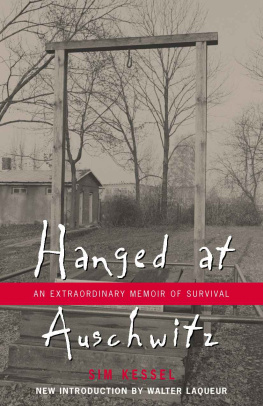
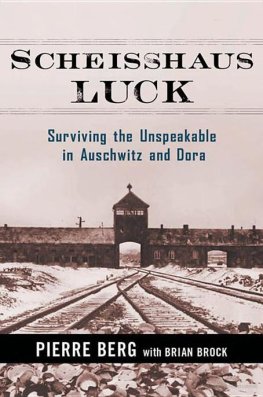

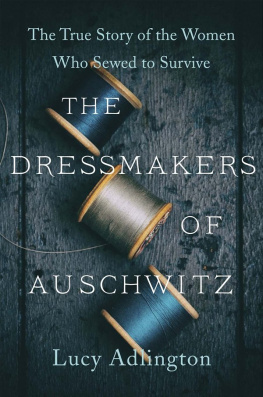
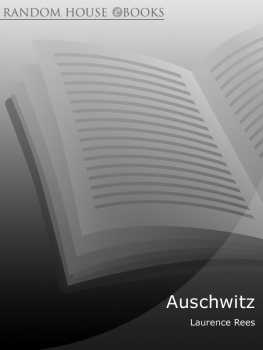
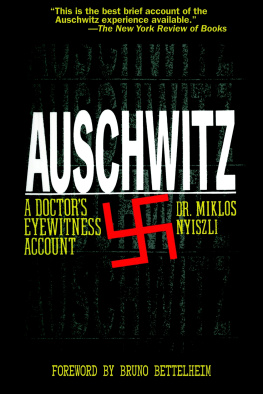
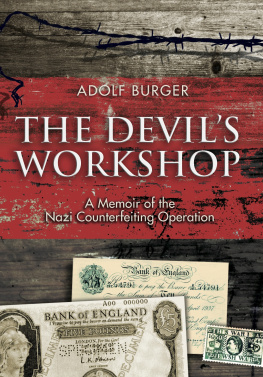

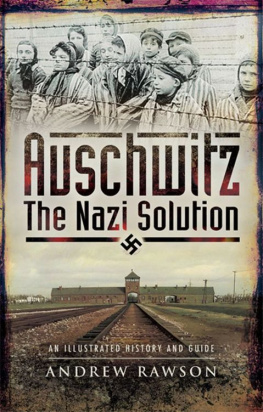





 The paper used in this publication meets the minimum requirements of American National Standard for Information SciencesPermanence of Paper for Printed Library Materials, ANSI/NISO Z39.48-1992. Manufactured in the United States of America.
The paper used in this publication meets the minimum requirements of American National Standard for Information SciencesPermanence of Paper for Printed Library Materials, ANSI/NISO Z39.48-1992. Manufactured in the United States of America.